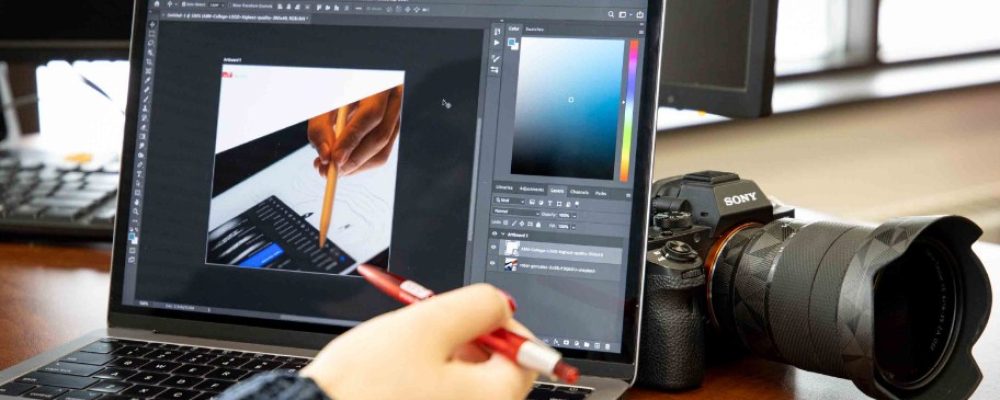In the digital age, photography and graphic design have experienced a revolutionary impact on how we perceive the world and communicate. The convergence of technology and creativity has opened up a range of unprecedented possibilities.
Consequently, it has allowed for the instant creation and dissemination of images through the internet and social media. In this article, we will explore the influence of photography and graphic design in the digital era and how they have shaped our visual culture.
The democratization of visual creativity
One of the main influences of photography and graphic design in the digital age is the democratization of visual creativity. Previously, these disciplines were reserved for professionals with access to expensive equipment and advanced technical knowledge.
Now, anyone with a smartphone can capture snapshots, and easy-to-use image editing applications are accessible to all.
This has led to an explosion of visual content on platforms such as Instagram, where amateur photographers and emerging designers can showcase their work to the world. The accessibility of digital tools and platforms has allowed more people to express themselves creatively, expanding the reach and diversity of contemporary visual culture.
Influence of social media on photography and graphic design
Social media has played a fundamental role in the influence of photography and graphic design in the digital age. Platforms like Instagram, Pinterest, and Tumblr have fostered the creation of virtual communities based on images. Where aesthetics and visual style are key elements. These platforms have created a space for users to share their photographs and designs, creating trends and inspiring others.
Furthermore, social media has also transformed the way brands and design professionals connect with their audience. Graphic design has become an integral element of brand identity. Allowing companies to communicate their message in a visually impactful way.
Digital marketing strategies are increasingly based on the creation of attractive and shareable visual content to capture the attention of users in an oversaturated world of information.
Changes in visual aesthetics
The digital era has brought about significant changes in visual aesthetics. The digital manipulation of images and access to a variety of creative tools have led to unique and surreal visual styles. The ability to combine graphic elements, photographs. And typography in design has resulted in the creation of innovative visual compositions.
Furthermore, the demand for authentic and realistic images has popularized documentary photography and lifestyle styles. Many brands and social media users seek images that reflect genuine and everyday experiences. Moving away from the overly retouched and stereotyped images of the past.
The fusion of photography and graphic design
In the digital era, the boundary between photography and graphic design has become increasingly blurred. Photographers now have the ability to digitally edit and retouch their images. Opening up endless creative possibilities.
On the other hand, graphic designers can use photographs as a basis for creating more complex visual compositions.
This fusion of disciplines has led to the creation of works that challenge traditional conventions and blend different forms of visual expression. Collaboration between photographers and designers has gained significance. Allowing for the creation of visual pieces that harmoniously combine narrative and graphic aesthetics.
The future of visual design in the digital age
As we move forward in the digital age, it’s exciting to think about the future of visual design. Virtual reality and augmented reality promise to open up new possibilities for interaction and visual experience. Emerging technologies such as artificial intelligence and machine learning could further revolutionize the way we create and consume images.
However, despite technological changes, creativity and the ability to tell stories through photography and graphic design will continue to be fundamental.
Ultimately, it is the vision and passion of the creators that drives the influence and impact of these disciplines in the digital age.
Conclusion
The influence of photography and graphic design in the digital age has been profound and lasting. From the democratization of visual creativity to the influence of social media, aesthetic changes, and the fusion of disciplines. These forms of expression have transformed our visual culture.
As we move towards the future, it is important to appreciate the power of the image and its ability to convey ideas, emotions, and narratives. Photography and graphic design in the digital age are powerful tools that allow us to communicate and connect in an ever-evolving world.





